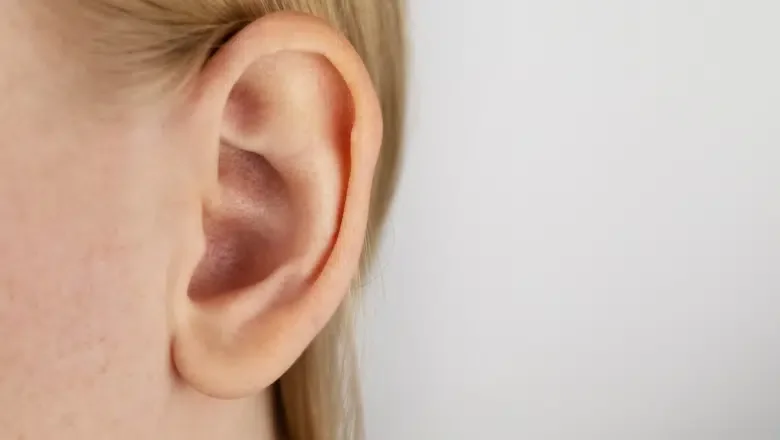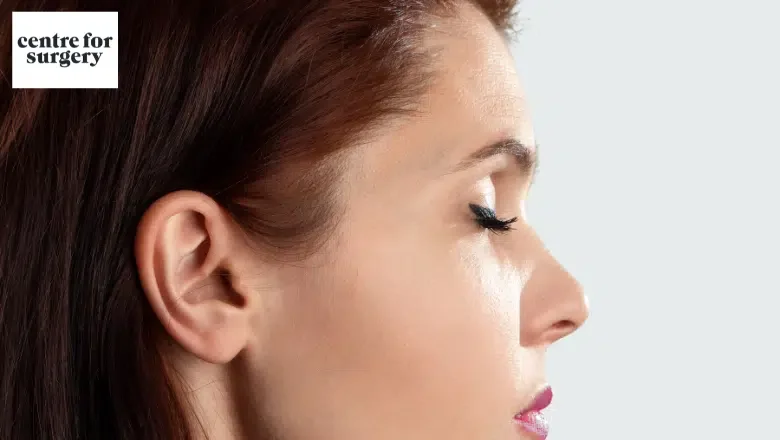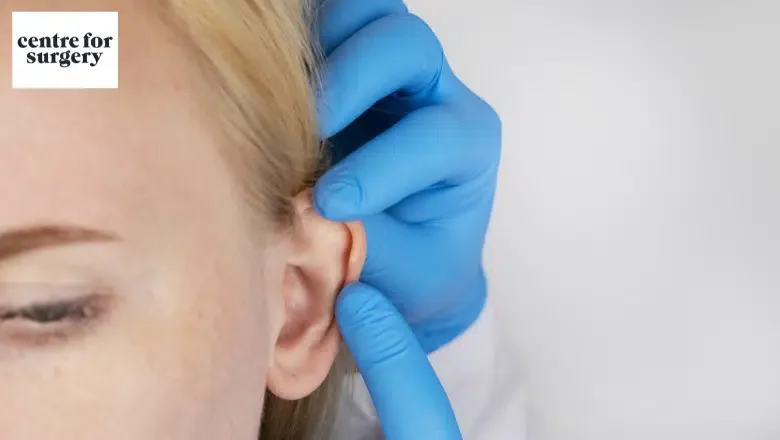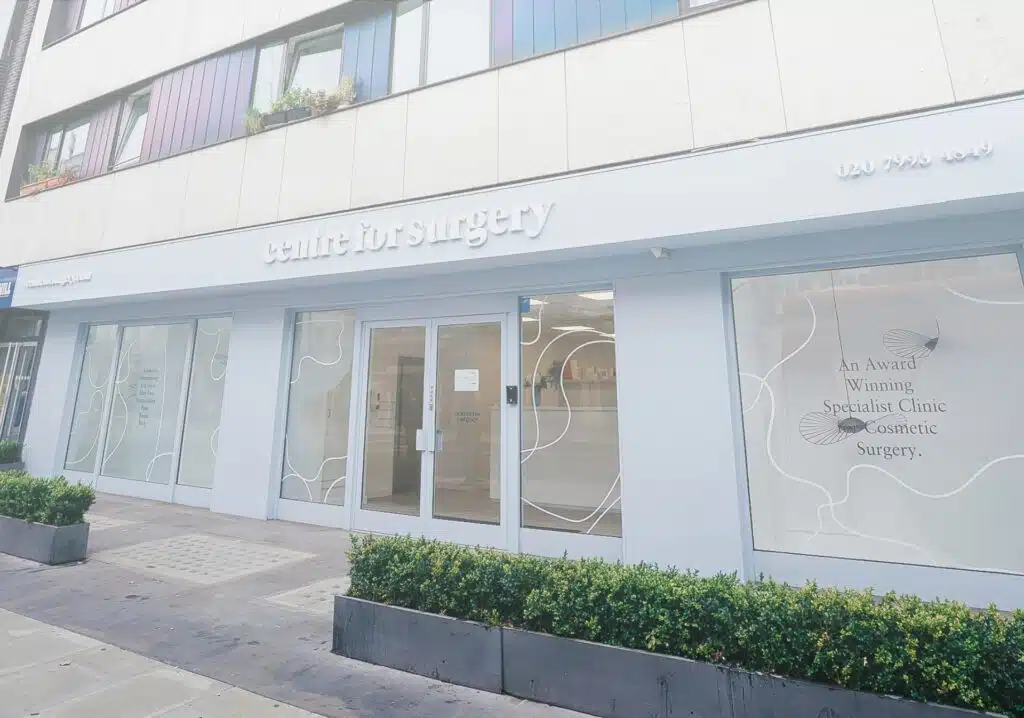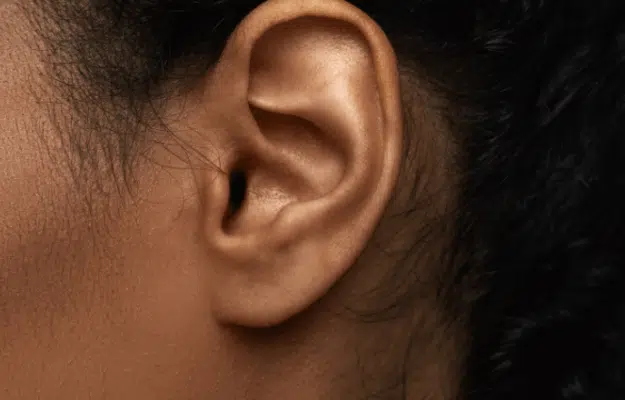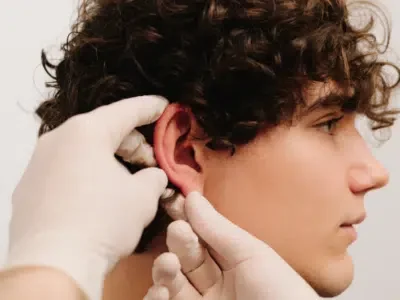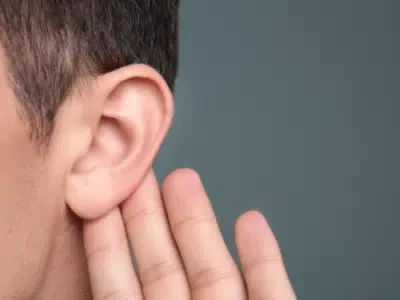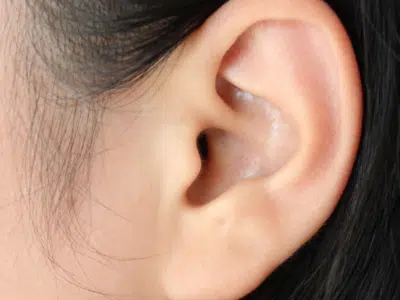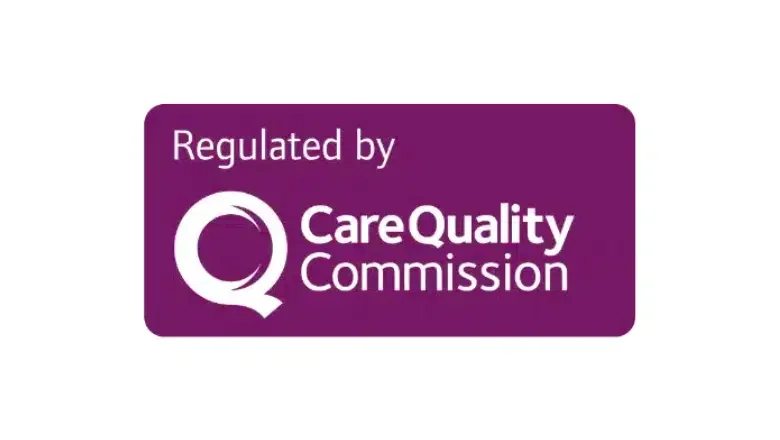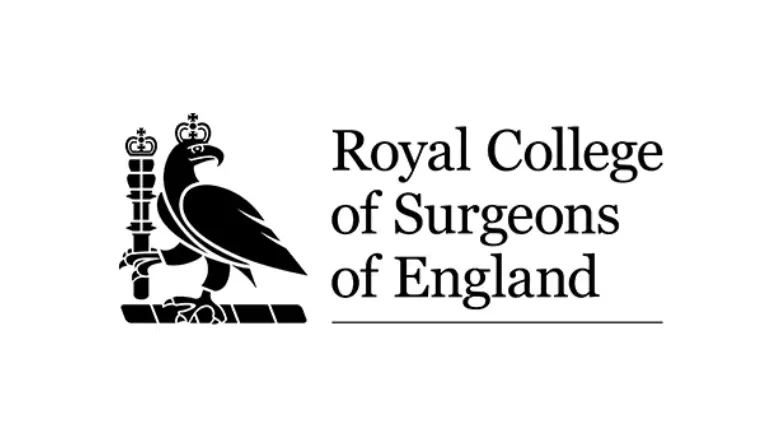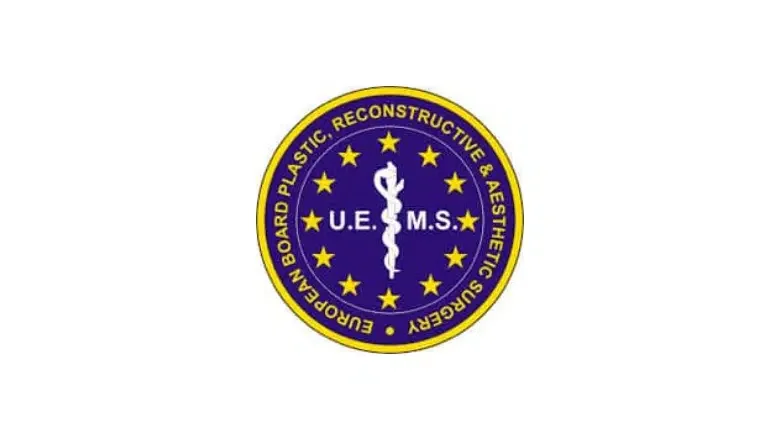What Is a Lump in the Earlobe?
What is the best way to get rid of a lump in my earlobe?
Earlobe lumps are most commonly caused by cysts that are completely benign in nature. There are two main techniques for treating lumps in the ear lobe:
- Surgical excision of the whole cyst and its lining
- Needle aspiration to remove the contents of the cyst
The best treatment for getting rid of an earlobe cyst involves a quick surgical procedure performed under a local anaesthetic. An injection of local anaesthetic will first be administered to the lump in the earlobe, followed by making a small incision to expose the cyst and complete removal. Fluctuant cysts are often suggestive of internal fluid, and sometimes, this can be effectively drained with a needle and syringe without the need for a surgical incision. Complete surgical removal of the cyst and its internal lining reduces the chances of recurrence. Needle aspiration of earlobe cysts is quick and easy to do, although this treatment method will likely result in the cyst returning.
RELATED: Earlobe Surgery Near Me
Lumps in earlobes
Most benign cysts in the earlobes go away on their own, but it is important to be aware of any changes in the shape of the cyst or if there are any associated features, such as bleeding or crusting of the overlying skin. In these cases, we recommend consulting with a specialist sooner for an accurate diagnosis.
RELATED: What are the benefits of ear surgery?
What’s the difference between a cyst and a keloid?
A cyst is a fluid-filled or semi-solid lump that forms beneath the skin, usually due to a blocked gland or follicle. It may move slightly when pressed and often feels round and firm. A keloid, on the other hand, is a type of raised scar that forms as a result of abnormal healing, often after a piercing or skin injury. Unlike cysts, keloids are made up of dense scar tissue and tend to grow beyond the original wound site. They can be itchy or painful and don’t contain fluid.
What causes an earlobe cyst to form?
A cyst is a well-defined soft tissue lump most commonly composed of thick white proteinaceous material. Skin cells normally proliferate and migrate towards the skin’s surface before they are shed. In some cases, these skin cells can migrate into the deeper layers of the skin and compose the cyst lining just beneath the epidermal layer. Cysts can also develop if the most superficial part of a hair follicle becomes disrupted. Another name for cysts is epidermal inclusion cysts or epidermoid cysts. Cyst removal is one of the many types of skin lesion removal treatments at Centre for Surgery in London.
Epidermoid cysts occur more commonly in men than in women, although anyone of any age or gender can develop an earlobe cyst. There are certain risk factors which may increase the likelihood of epidermal inclusion cysts occurring, including:
Injury to the skin
Soft tissue injury may result in abnormal skin healing, and healthy skin cells can migrate into the deeper layers of the skin, leading to the formation of a cyst.
Genetics
Several rare medical conditions are present from birth. They are associated with an increased likelihood of developing systems, including Gardner syndrome, which is also associated with multiple polyposis in the large intestine.
Age
Earlobe cysts are most common in men and rare in childhood, although puberty increases the risk of developing cysts.
Acne
Patients who suffer from acne are at higher risk of developing cysts beneath the skin and this is particularly likely in severe cases of acne, also known as cystic acne.
Can earrings cause cysts?
Yes, wearing earrings—especially if they’re heavy, made from low-quality materials, or used after a piercing hasn’t healed properly—can sometimes lead to cyst formation. The irritation or trauma from repeated pressure or infection in the piercing can block glands in the skin, causing a cyst to form. In some cases, the body reacts to the earring itself, especially if there’s a metal allergy, which can also result in inflammation and a small lump.
What are the symptoms and signs of earlobe cysts?
Earlobe cysts, also known as epidermoid cysts, most commonly appear as well-defined soft tissue lumps just beneath the skin of the earlobe. Although they most commonly match the colour of the overlying skin, they may occasionally become inflamed and appear red.
Earlobe cysts usually measure no more than 5 to 6 mm in diameter. A sudden increase in size should prompt you to have a clinical assessment with a doctor to rule out anything more serious. Cysts often rupture spontaneously by leaking a proteinaceous, thick, white substance known as keratin. In most cases, cysts in the earlobe are harmless and seen as a cosmetic nuisance for most people with them. In some cases, an earlobe cyst may become acutely painful and tender, which may suggest an infected cyst, and this will require a further medical assessment to guide the best treatment.
Painful earlobe
An infected cyst often presents as a painful and acutely tender lump in the earlobe with redness of the overlying skin. An infected earlobe cyst may sometimes burst and result in the formation of a skin boil or furuncle.
What causes a lump in the earlobe to form?
Normal shedding of superficial skin cells may sometimes be altered due to an injury to the skin, which may result in the superficial skin cells migrating deeper into the skin. When these cells proliferate, they compose the cyst wall lining and produce a proteinaceous white substance known as keratin, which expands the size of the cyst. Earlobe cysts may also occur due to injury to superficial hair follicles or sebaceous glands and often have a hereditary link, which is more common in first-degree relatives. In many cases, a lump in the earlobe may form without any obvious precipitating cause and, in virtually all cases, is harmless in nature. Removal of earlobe lumps may often be combined with an earlobe repair. People with large earlobes can have these reduced as part of an earlobe reduction procedure.
RELATED: What is earlobe reduction?
When is the best time to seek medical attention for an earlobe cyst or lump in the earlobe?
Most cases of lumps in the earlobe are due to the development of an epidermoid cyst and will often go away on their own without any active treatment. Any persistent or sudden change in size in earlobe cysts should prompt you to seek a medical assessment to rule out more serious underlying causes. Typical features that should trigger a medical referral include a significant change in the size of the earlobe cyst, an increase in pain or discomfort, overlying skin changes, or interference with hearing and balance.
Will my earlobe lump go away on its own?
Benign earlobe cysts often resolve on their own, but the time it takes for this to occur varies between individuals and is influenced by several factors. In some cases, earlobe cysts will persist and will require surgical removal. It is important to monitor the size of any lump in your earlobe, and if it is not reducing in size on its own, then we would advise booking a consultation at Centre for Surgery to remove it.
Can an earlobe lump be cancer?
Although rare, any lump should be taken seriously if it’s growing, changing in shape or colour, bleeding, or painful. Most earlobe lumps are benign, such as cysts, keloids, or small lipomas. However, very occasionally, a lump may represent a skin cancer or another type of tumour, particularly if it’s hard, fixed, and irregular. A proper medical assessment is the best way to rule out anything serious and provide peace of mind. At Centre for Surgery, our consultants can examine the lump and recommend further steps, such as removal or biopsy, if needed.
What is the best way to get rid of a cyst in the earlobe?
Many people may attempt DIY treatment at home and try to squeeze the earlobe cyst themselves manually. We would advise against this because the risk of infection and prominent scarring is significantly increased. The risk of recurrence is also much higher. Applying a hot towel against your earlobe is better to promote skin vasodilation and facilitate spontaneous cyst rupture. The best way to eliminate a persistent ear cyst that will not go away on its own is with a simple surgical procedure to remove the earlobe lump using a local anaesthetic. Complete surgical removal of an earlobe cyst and its lining will minimise the risk of future recurrence. Needle aspiration is an alternative treatment to empty the cyst of keratin. Although this is a quick, non-surgical procedure, the likelihood of occurrence is high. Most earlobe cysts are benign and do not have cancerous potential.
Why does the lump in my earlobe hurt?
Any significant change in the size of the cyst, with an increase in pain and discomfort, and disruption of hearing should prompt an urgent assessment with a medical specialist to achieve an early and accurate diagnosis.
What is the best way to eliminate a lump in my earlobe piercing?
Earlobe piercings are an increasingly popular trend, and lumps can commonly develop on the earlobe at any point after having an ear piercing treatment. Some people are prone to developing excessive scarring, known as hypertrophic scars or keloid scars. Keloid scars extend beyond the margins of the ear piercing, resulting in the appearance of a rounded lump and may be evident to others. Earlobe keloids do not go away independently and will require surgical treatment to resolve them. The ideal treatment involves surgical removal combined with a steroid injection into the keloid to minimise the likelihood of recurrence. Keloids affecting the earlobe are more common in darker-skinned people.
Why Choose Centre for Surgery for Earlobe Cyst Removal
At Centre for Surgery in London, we offer expert removal of earlobe cysts using minor surgical techniques designed for minimal scarring and excellent cosmetic outcomes. Our procedures are carried out by highly trained plastic surgeons under local anaesthetic, often in under 30 minutes. Whether your cyst is causing discomfort, infection, or you simply want it gone for aesthetic reasons, we provide personalised treatment in a safe, comfortable and discreet setting at our Baker Street clinic.
We pride ourselves on consultant-led care from start to finish. Each case is thoroughly assessed to ensure the most appropriate approach is taken, with precise excision and delicate closure techniques used to preserve the natural contour of the earlobe. We also offer same-day treatment for suitable cases.
Here’s what some of our patients have said:
“I had an earlobe lump that kept recurring. The team explained everything clearly, removed it completely, and the scar is barely noticeable. I’m so relieved.” — Farah A.
“I was nervous at first, but the procedure was quick and painless. Everyone was so professional, and I felt really well cared for.” — Jordan K.
“Such a clean and calm clinic. The surgeon was meticulous and took real care with the stitching. I’d recommend them without hesitation.” — Natalie W.
To find out more about what sets us apart, visit our About Us page, browse our team of expert surgeons, and explore our plastic surgery blog for helpful advice and guidance. We also provide clear finance options and invite you to explore our clinic FAQs to prepare for your visit.
Our Baker Street facility is located at 95–97 Baker Street, London W1U 6RN. To book your consultation, call us on 0207 993 4849 or email contact@centreforsurgery.com.
REFERENCES:
